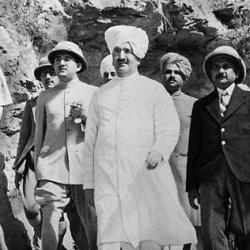Emma Tarlo’s recent Entangled is a study of the global market in human hair.
In a TLS review, Kathryn Hughes describes a “multi-billion-dollar global hair market.” Tarlo explores “the processes by which the greasy hairballs unpicked in Mandalay get refashioned into ‘frothy toppers’ and ‘dome bowlers’ in New York” and asks “What does it mean exactly that the poker-straight hair of women from mainland China become Afro weaves in Dalston, east London, or Jackson, Mississippi? And why do the darkly glossy locks harvested from Indian heads need to be reconfigured as ‘virgin Russian’ before they can be sold for top dollar to a wig-maker in Johannesburg?”
Among Haredi Jews, married women wear wigs in public, but a decade ago the community threw the hair market into crisis when women refused to purchase hair harvested from Indian temples: “In 2004, the ninety-four-year-old Rabbi Elyashiv decreed that the wigs worn by married women were unclean and should be destroyed immediately. His objection lay in the fact that the Indian hair from which the sheitels were made came from Hindu temples in southern India where pilgrims are tonsured before worship. This, the rabbi ruled, made the hair ‘idolatrous.’ The result was hysterical high feeling as distraught Orthodox women in headscarves and swimming caps threw their costly and carefully curated sheitels onto a series of pyres. . . . Jewish wig-makers, or sheitel machers, in New York went bust, the economy of the donor temples was threatened, and adjacent communities in rural India dipped nearer to destitution. Yet such is the way of late-stage global capitalism, that other interested parties rushed to fill the gap. Korea, long accustomed to producing synthetic weaves for the African-diaspora market, now stepped forward to do brisk kosher business.”
Tarlo concluded that the fears were overblown. She visited the temples that produce the hair and learns that “contrary to the rabbi’s nightmare imaginings, hair is never worshipped, never laid before an altar. Rather, it is donated to the temple as a purification rite and a gesture of thanks for good exam results, a successful knee operation, the arrival of a male baby after a long run of girls.” It’s a bit rich that an anthropologist would lecture a rabbi on the definition of idolatry.















